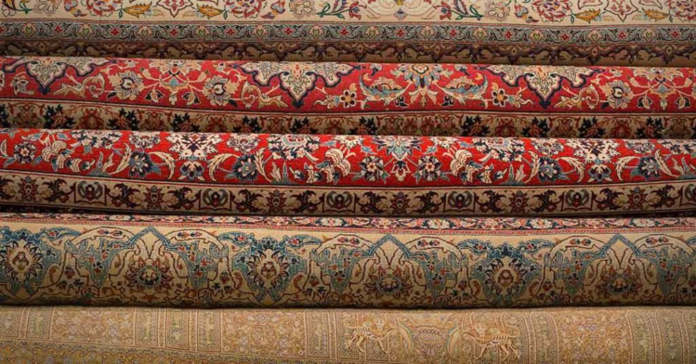Few people can sit back and discuss the history of each piece of furniture in their home. Granted, we don’t need to know how something came about to appreciate its use, but it helps.
Take your rugs, for example. You might appreciate how it feels under your feet or how it provides an environment of comfort and style to your home. But did you know the deep history behind how it came about?
There are quite a few interesting historical facts about rugs. Let’s discuss seven of these.
The small sized rug are a wonderful technique to make your bedroom seem more comfortable.
1. The First Rug Dates Back to the 5th Century BC
Archeologists are uncovering amazing discoveries every year. It’s difficult to believe that a rug would be one of those discoveries.
Yet, this was the case back in 1959, when a rug was found in the burial mound of a Siberian prince. This rug was named the “Pazyruk Carpet” and is the oldest known rug.
Radiocarbon testing revealed that this rug is about 2500 years old. You would think that a rug this old would be simple and weaving technique elementary but this rug has exquisite detail and superb design.
This rug survived in a thick sheet of ice until discovered. It was carefully thawed and is now available for our viewing pleasure in Russia’s Hermitage Museum.
2. A 17th Century Rug Sold for $33 Million
A high quality rug is a good investment but would you be willing to pay millions of dollars for an antique rug? Someone was.
One anonymous buyer at Sotheby’s New York 2013 auction wanted a particular 17th century Persian rug so bad that they paid $33 million for it.
The rug is a hand woven red design of sickle-leaves and flowers. It is named the Clarke Sickle-Leaf Rug after the original owner who sold it at the auction and it’s design.
3. Rugs are Traditionally Made by Hand
The massed produced rugs of today don’t even hold a candle to the handmade rugs of old.
Before machinery and a weaving loom were invented, artisans used hand knotting to create some beautiful rugs that are works of art to this day.
These hand knotted rugs were used to fill all types of needs from sleeping rugs to saddle rugs. They were made from a variety of materials. Learn more about those materials here.
4. Handmade Rugs Can Take Years to Complete
Depending on the intricacy of the design, the size of the rug, the materials used, and the knot count, a handmade rug could take the artist months and even years to finish.
This painstaking process is what sets older rugs apart from their machine made counterparts. The process shows through the beauty and quality of the rug.
It is also why handmade rugs are so much more expensive than newer rugs.
5. Traditional Rugs Contained Symbolism
Rugs have been made for centuries around the world. Looking at these rugs from a distance, you can appreciate the beauty in the design. It’s interesting to know, however, that these designs were not random.
Depending on where the rug was made, it would usually contain some symbols or motifs in the design that were important to the culture of the people.
For example, many of the rug makers were women and some symbols represented the desire to get married.
Other symbols would represent male or female fertility, pregnancy, purity, and family. Learn more about the tribal motifs and their meanings here.
6. Antique Rugs Were Dyed with Natural Sources
Modern rugs are colored with synthetic and chemical laden ingredients. Historically, rugs were dyed using natural sources, usually vegetable or insect materials.
While modern technology may improve the durability of the dye, natural dyes have more warmth and depth.
Reds are produced by using the cochineal beetle’s shell or the root of the madder plant.
Blues are created with the indigo plant. Yellow dyes are made from larkspur flowers or weld. To create green dye, weavers mix indigo and larkspur together.
Purple dye is made from the gland of the murex, a type of sea snail. Orange can be produced by using henna or mixing the ingredients for red and yellow dye. Brows can be made with tree bark or nutshells.
7. Braided Rugs Were Created by Native Americans
Although most people think that braided rugs were invented by the early colonial settlers, they actually began in the traditions of the Native Americans.
These rugs were used as horse saddles and in ceremonial pow wows. That doesn’t mean that Americans didn’t create their own version of the braided rug.
During times of hardship, the early American settler’s wives used scraps of material left behind from their sewing projects to create long braids that they stitched together into a circle or oblong shaped rug.
Conclusion
These historical facts may make you look differently at your own rug collection at home.
It may also help you to appreciate the people and stories behind the design, the ingenuity behind the color, and the hard work it took to produce such a beautiful piece of art.











